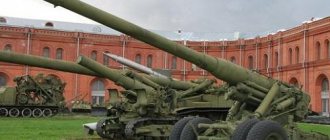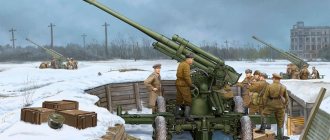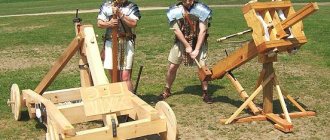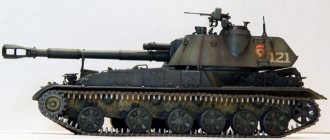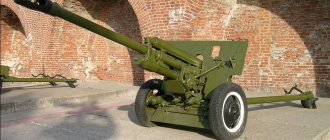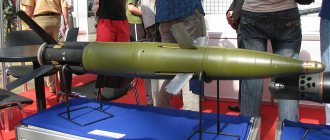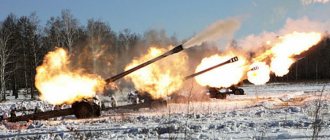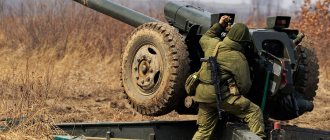Type of heavy gun
| 180 mm S-23 gun | |
| S-23 in the Beit HaTotchan Museum, Zichron Yaakov. | |
| Type | Heavy cannon |
| Place of origin | Soviet Union |
| Service history | |
| In service | 1955-present |
| Used | Bulgaria Soviet Union Syria |
| Wars | Yom Kippur War Lebanese Civil War Iran-Iraq War Syrian Civil War |
| Production history | |
| Designer | NII-58 |
| Developed | 1945–1955 |
| Manufacturer | JSC PA "Barricades", Volgograd |
| Produced | 1955–1971 |
| Characteristics | |
| Weight | 21,450 kg (47,290 lb) |
| Length | 10.48 m (34 ft 5 in) (L/58.27) with barrel removed for transport. |
| Barrel length | 8.8 m (28 ft 10 in) |
| Width | 2.99 m (9 ft 10 in) |
| Height | 2.62 m (8 ft 7 in) [1] |
| Crew | 16 [1] |
| Shell | HE nuclear capable [1] |
| Caliber | 180 mm (7.1 in) |
| Breech | broken screw |
| Shipping | divided path |
| Height | -2° to +50° |
| Traverse | 44 ° |
| Rate of fire | Maximum 1 rpm; 1 round every two minutes supported [1] |
| starting speed | 850 m/s (2,800 ft/s) [2] |
| Effective firing range | 30.4 km (18.9 mi) [1] |
| Maximum firing range | 43.8 km (27.2 mi) with RAP [1] |
| Attractions | Mechanical sight S-85, panoramic sight PG-1M and direct sight MVShP |
180 mm S-23 gun
(Russian: 180-mm cannon S-23) was a Soviet heavy pistol of the Cold War era.
It was developed in the early 1950s from naval guns. His first public appearance was the 1955 May Day Parade in Moscow. [1] For some time in the West it was believed that the S-23 was in fact a 203 mm gun, and as a result it was often referred to as the M1955 203 mm gun howitzer
. However, after an example was recorded in the Middle East in the 1970s, this misconception was dispelled. [3] [2]
Design history[edit]
The S-23 was developed by NII-58 as part of a new series of heavy artillery systems consisting of the following types:
- 180 mm S-23 gun;
- 210 mm howitzer S-23-I, also
known as
S-33
; - 280-mm mortar S-23-II
aka
S-43
and - 203-mm gun-howitzer S-23-IV
.
All had to be based on the same car. An order was given to begin mass production, but after the release of seven S-23s (GRAU index: 52-P-572
), one S-33 and one S-43 PO "Barricades" in 1955, the project was canceled. [4] The seven guns remained in service until 1967 and were regularly displayed during annual May Day parades, towed by AT-T artillery tractors. At the request of Syria, which required a large caliber gun system in the late 1960s, the project was soon revived, and twelve more S-23 guns were produced in 1971, as well as a new VOF28 round with the RAP OF43 round. The remaining shells are VF-572 with the F-572 high-explosive shell and VG-572 with the G-572 concrete-piercing shell. [5]
S-23 at Cairo Citadel, Egypt
S-23 in traveling configuration, towed by AT-T heavy artillery tractors, at the May Day parade in Moscow, 1964.
Gun mount
Tower design
The thickness of the armor of the roof and turret walls on Kirov-class cruisers was 50 mm.
In the turrets of the Maxim Gorky class cruisers, the thickness of the armor of the roof and front wall of the turret was increased to 70 mm. Tactical and technical characteristics of the installation
| TTX | Meaning |
| Vert. aiming - angle, deg / speed, deg/s | -4 +50 / 10 |
| Gor. aiming - angle, deg / speed, deg/s | 360 / 8 |
| Number of personnel | 50 |
| Total electric/motor power, kW | 104 |
| Barrel survivability (with BZ), rds | 400 |
| AC mass, t | 247,4 |
Ammunition supply system
Ammunition was supplied to the fighting compartment from the reloading compartment using cable elevators. Ammunition for each gun was supplied by its own elevator with a pusher having electromechanical and manual drives. The elevator pusher was equipped with three valves - one for shells and two for half-charges. From the elevator, ammunition was fed into a swinging tray located in the fighting compartment of the turret. When the bolt was opened, the tray tipped over from the loading line to the loading angle, and after loading it occupied its previous position to accept ammunition for the next shot. The loading angle was +6.5°. After firing, the guns were purged with compressed air. The loading time of the gun (shell and 2 caps) was about 25 seconds.
History of operations[edit]
The West assumed that the S-23 was produced in the Soviet Army at the rate of 12 units per heavy artillery brigade. It was exported to Syria and some sources suggest it may have been exported to other Middle Eastern countries such as Egypt and Iraq, and probably to the Indian Army. [2] The howitzer is believed to have been used by the Syrian Army in the Syrian Civil War.
Right view of S-23
S-23 in the Museum of Communications and Artillery, St. Petersburg
Yom Kippur War[edit]
The S-23 180 mm guns were deployed in forward positions as part of the Syrian Army General Staff Reserve during the Yom Kippur War. On the first day of the war, they bombarded Mount Canaan, an intelligence base near Safed, and Mahanaim airfield. This early bombardment succeeded in disrupting Israeli intelligence and communications. [6]
Lebanese Civil War[edit]
During the Lebanese Civil War, the Syrian Army shelled East Beirut with 180mm guns and 240mm mortars in 1989 as part of an offensive to remove the faction's Christian leader Michel Aoun, causing more than 900 casualties. [7]
Belarusian MLRS BelGrad. TTX. Firing range. Ammunition. Dimensions
The Armed Forces of the Republic of Belarus have 376 multiple launch rocket systems (MLRS), most of which are BM-21 multiple launch rocket systems. These systems were in service with the Soviet Army formations stationed on the territory of the republic, which after the collapse of the USSR became the basis of the Armed Forces of independent Belarus. Recently, the command of the Belarusian army has been faced with the problem of significant wear and tear on the vehicle chassis of the BM-21 systems. A solution to this problem was found in replacing the original Ural-375D chassis with the chassis of the newly developed MAZ-6317 all-terrain vehicle.
Read more…
Operators[edit]
Map with S23 operators in blue and former operators in red
Current operators[edit]
- Syria (36 initially in one heavy artillery brigade; source states 10-20 remain)[8]
- North Korea (72 parts were used to create the Koksan self-propelled gun)
Former operators[edit]
- Bulgaria
- India
- Iraq
- Russia
- Somalia
- Soviet Union - Transferred to successor states.
Descriptions and characteristics of the weapon
The B-1-P gun was designed at the design bureau (KB) and put into production in 1932. Initially it had a fastened barrel and a wedge lock. In 1933, an installation for the production of liners was installed, supplied by an Italian company. In 1934, the first lined gun was tested at the test site. The 57.5-caliber barrel was lined with the ability to replace liners on a ship without removing the swinging part from the turret. The Kirov cruiser was initially equipped with finely rifled barrels, but by June 22, 1941, on all finished Project 26 and 26-bis cruisers, all guns already had deep rifled liners.
The shutter used the Vickers system - a two-stroke two-stage piston. The bolt tilted upward, and there was a counterweight to facilitate unlocking. Recoil devices were placed in the lower part of the one-piece cradle. The recoil brake was a hydraulic spindle type, the knurls were hydropneumatic. Each barrel had one recoil brake and two knurls. The refueling of projectiles and half-charges of the throwing type was carried out by a pneumatic rammer. The placement of guns in one cradle, a short recoil when fired, as well as piston valves that open upwards, made it possible to create a small installation in size and weight.
Links[edit]
- ^ B s d e g Margiotta, Franklin D. (1997). Brassey's Encyclopedia of Land Forces and Wars
. Potomac Books. ISBN 978-1-57488-087-8. - ^ abc "180 mm ammunition for the Russian S-23 gun, Field artillery". Jane Defense website. Retrieved June 3, 2011.
- “180mm S-23 | Weaponsystems.net".
- ↑
Shirokograd A.B.
(2000). Encyclopedia of Russian Artillery
. Harvest. - https://www.russianarms.ru/forum/index.php?topic=3530.0
- Usher, Dani (2014). Inside Israel's Northern Command: The Yom Kippur War on the Syrian Border (USA ed., 2016). Lexington, KY: University of Kentucky Press. ISBN 978-0-8131-6766-4. Retrieved March 31, 2016.
- Rabin. "114 Statement to the Knesset by Defense Minister Rabin on the situation in Lebanon - November 29, 1989". Israeli Ministry of Foreign Affairs
. Retrieved March 31, 2016. - Asher, Jerry (1987). Duel for the Golan: The 100-hour battle that saved Israel. Military history of the Pacifica. paragraph 51. ISBN 09-3555-3-52-5.
Fire control devices
In the rear part of the tower there was a turret central post with a turret-mounted machine gun. Also installed in the turret were a 6-meter DM-6 stereo rangefinder, a VB commander's sight and an MB sighting sight.
The Project 26 cruisers were equipped with a fire control system (FCU) of the main caliber "Molniya", created at). The basis of the control system was the central firing machine TsAS-2 (it also had a torpedo triangle design and could be used as a torpedo firing machine). The Molniya control system, in addition to TsAS-2, included a number of sending and receiving target designation devices, command signals and reports of reverse control of the position of weapons, posts, instruments and mechanisms, as well as optical sights and rangefinders. Thus, the roll along the axis of the barrel (along the axis of sight of the ship—the target) was worked out by the vertical gunner VMTs-2.
The Molniya fire control system allowed the fire to be divided among several targets. For example, the bow turrets could be controlled according to the normal scheme from the DAC, and the aft turret could fire independently, etc. Each of the artillery towers had its own automatic firing machine, which, in combination with its own DM-6 rangefinders, allowed them to fire independently without using data from the DAC. Firing at a suddenly appearing target at night or in poor visibility conditions was ensured by two night central guidance posts equipped with 1-N night sights. They were the simplest computing devices that made it possible not only to give target designation to any of the towers, but also to introduce adjustments based on the results of the first salvos.
Demining installation UR-77 Meteorite TTX. Armament. Dimensions
Until the end of the 80s, military specialists of the Soviet Union attached great importance to the offensive actions of large armored and mechanized formations, the key to successful actions of which was bold, quick and decisive maneuver. Impeding the maneuver of advancing or advancing troops and inflicting defeat on them could be caused by the installation of mine-explosive barriers by the enemy in advance or by remote mining during the battle. Therefore, quickly crossing minefields by making passages in them has become the most important condition for the accomplishment of assigned combat missions by combined arms units and formations.
Read more…
Production and testing
Assembly of the MK-3-180 installation
Tests
The experimental swinging part of the B-27, manufactured at , was delivered to the Scientific Testing Artillery Range (NIAP) in November 1936. For testing, the swinging part of the B-27 was installed on the machine of a 356-mm range installation, which was specially adapted for mounting the B-27. 27. On November 22-28, 1936, factory tests were carried out at NIAP, which revealed the unsatisfactory performance of recoil devices. Repeated tests were carried out from December 30, 1936 to January 3, 1937. After the modifications were completed, control tests were carried out in February - May 1937.
The installation of the turrets on the light cruiser Kirov was completed in the summer of 1937. The first test firing, which took place on September 15-17, caused a lot of comments. The final ship tests of the MK-3-180 took place between July 4 and August 23, 1938. The commission’s conclusion read: “The MK-3-180 is subject to transfer into operation by personnel and for military testing.” The installation was delivered with a rate of fire of two rounds per minute instead of six according to the project. Factory tests of the installations for the cruiser "Voroshilov" were carried out in January-February 1938, but they were not completed, because the installations were urgently sent to the cruiser.
Production of tower units
The first three turrets for the Kirov were manufactured by the Leningrad Metal Plant. Subsequently, their production was transferred to the Nikolaev Shipyard No. 198 named after Marty, which, according to LMZ drawings, produced MK-3-180 installations for subsequent cruisers of projects 26 and 26-bis.
Gun mount
The competition for the production of tower units was won by the St. Petersburg Metal Plant with the MK-3-12 project. The competition was attended by the Putilov and St. Petersburg Metal Plants, foreign ones: Vickers, Krupp, Skoda, Schneider-Creusot. The Obukhov plant refused to participate in the competition; the Society of Nikolaev Factories and Shipyards expressed its readiness to assemble towers according to someone else’s drawings. The MK-3-12 turret was designed by the St. Petersburg Metal Plant, and with some modifications it was put into production. The tower installation consisted of two parts, a fixed drum with a centering pin and a movable tower table with a supply pipe. The horizontal beams of the rotating part were located in the conical part, due to which the height of the tower was significantly reduced. Some original technical solutions were used in its design, such as the use of metal balls instead of rolls under the rotating table of the tower, a composite roof made of 5 armor plates. Guidance was used using electric motors with a Jenny clutch.
| Characteristics of the gun mount | Values |
| Thickness of the front inclined armor plate, mm | 203 |
| Side armor plate thickness, mm | 203 |
| Rear armor plate thickness, mm | 305 |
| Thickness of upper armor plates, mm | 76 |
| Loading range, ° | -5/+15 |
| Vertical aiming angles, ° | -5/+25 |
| Maximum horizontal aiming speed, °/s | 3.2 |
| Maximum horizontal aiming speed, °/s | 4 |
| Gun mount weight, kg | 872000 |
| Weight of the rotating part, kg | 312000 |
| Rate of fire, rounds per minute | 2,2-3 |
| Number of shells per turret, pcs. | 400 |
Coastal batteries
The described guns were widely used in coastal armored turret batteries. The decision to build tower batteries with 305-mm guns was made in view of the physical and moral obsolescence of existing batteries and insufficient firepower to combat the enemy navy. The MB-3-13 and MB-2-12 towers, designed by the St. Petersburg Metal Plant, which won the competition for their creation thanks to the experience of developing the MK-3-12 towers, were installed on the concrete foundation of the artillery block. Some towers were removed from the battleships Poltava and Empress Maria, after refitting they were named MB-3-12FM. The construction of batteries began under Tsarist Russia and ended in the USSR. The design of the artillery blocks and the general layout of the battery was different due to the different terrain.
List of batteries and forts armed with 305 mm guns.
| Name | Location | Number of guns | Art installation type | Adoption | Removal from service |
| Battery No. 30 | Chersonesos Peninsula | 4, after the war 6 | 2 MB-2-12 turrets, after the war 2 MB-3-12FM. | 1934 | 1961 |
| Battery No. 35 | Chersonesos Peninsula | 4 | 2 turrets MB-2-12 | 1929 | 1942 |
| Fort Eno | Inoniemi Peninsula | 8 | 2 MB-2-12 towers, 4 open installations | 1916 | 1918 |
| Fort Krasnaya Gorka | Near the village of Krasnaya Gorka, not far from Kronstadt | 8 | 2 MB-2-12 towers, 4 open installations | 1914 | 1962 |
| Tower battery on Kuivassaari island | O. Kuivassaari | 2 | 1 two-gun turret | 1934 | n/a |
| Tower battery on Makiluoto Island | Makiluoto Island | 2 | 1 two-gun turret | 1934 | n/a |
| Tower battery No. 981 | o.Russian | 6 | 2 MB-3-12FM turrets | 1934 | 1997 |
| German battery Nino (Mirus) | Guernsey | 6 | 4 single-gun S.40 turrets | 1943 | 1945 |
Comparison of two towers
| Characteristic | MB-2-12 1934 | MB-3-12FM 1954 |
| Caliber, mm | 305 | 305 |
| Number of guns in the turret | 2 | 3 |
| Projectile weight arr. 1911, kg | 471 | 471 |
| Warhead weight, kg | 132 | 132 |
| Initial projectile speed, m/s | 762 | 762 |
| Maximum firing range of projectile mod. 1911, m | 27980 | 28528 |
| Shells for 1 gun, pcs. | 200 | 180 |
| Shells in the cellar of the tower, pcs. | 400 | 540 |
| Half-charges in the cellar of the tower, pcs. | 1200 | 1125 |
| Elevation angle, degrees | 35 | 40 |
| Angle of descent, degrees | 1 | 3 |
| Angle of horizontal rotation, degrees | 360 | +185/-185 |
| Loading angle, degrees | 0-14,5 | 6 |
| Thickness of front plates, mm | 305 | 203 |
| Thickness of side plates, mm | 305 | 203 |
| Thickness of the back plate and door, mm | 305 | 305 |
| Roof thickness | 203 | 175 |
| Maximum rate of fire, rpm | 2,1 | 2,25 |
| Electrically driven vertical guidance speed, deg/s | 0,012-5 | 0,5-3 |
| Electrically driven horizontal guidance speed, deg/s | 0,375–0,43 | 0,3 |
| Lock opening time, s | 7,2 | 7,34 |
| Sighting devices | LMZ | PMA |
An excerpt characterizing the 180 mm S-23 gun
- Well, is everything ready, Vasilich? - said the count, rubbing his bald head and looking good-naturedly at the officer and orderly and nodding his head to them. (The Count loved new faces.) - At least harness it now, Your Excellency. - Well, that’s great, the countess will wake up, and God bless you! What are you doing, gentlemen? – he turned to the officer. - In my house? – The officer moved closer. His pale face suddenly flushed with bright color. - Count, do me a favor, let me... for God's sake... take refuge somewhere on your carts. Here I have nothing with me... I’m in the cart... it doesn’t matter... - Before the officer had time to finish, the orderly turned to the count with the same request for his master. - A! “Yes, yes, yes,” the count spoke hastily. - I'm very, very happy. Vasilich, you give orders, well, to clear one or two carts, well... well... what is needed... - the count said in some vague expressions, ordering something. But at the same moment, the officer’s ardent expression of gratitude already cemented what he had ordered. The count looked around him: in the courtyard, at the gate, in the window of the outbuilding, the wounded and orderlies could be seen. They all looked at the count and moved towards the porch. - Please, your Excellency, to the gallery: what do you order about the paintings? - said the butler. And the count entered the house with him, repeating his order not to refuse the wounded who asked to go. “Well, well, we can put something together,” he added in a quiet, mysterious voice, as if afraid that someone would hear him. At nine o'clock the countess woke up, and Matryona Timofeevna, her former maid, who served as chief of gendarmes in relation to the countess, came to report to her former young lady that Marya Karlovna was very offended and that the young ladies' summer dresses could not stay here. When the countess questioned why m me Schoss was offended, it was revealed that her chest had been removed from the cart and all the carts were being untied - they were removing the goods and taking with them the wounded, whom the count, in his simplicity, ordered to be taken with him. The Countess ordered to ask for her husband. – What is it, my friend, I hear things are being removed again? - You know, ma chere, I wanted to tell you this... ma chere countess... an officer came to me, asking me to give several carts for the wounded. After all, this is all a gainful business; But think about what it’s like for them to stay!.. Really, in our yard, we invited them ourselves, there are officers here. You know, I think, right, ma chere, here, ma chere... let them take them... what's the rush?.. - The Count timidly said this, as he always said when it came to money. The Countess was already accustomed to this tone, which always preceded a task that ruined the children, like some kind of construction of a gallery, a greenhouse, arranging a home theater or music, and she was used to it and considered it her duty to always resist what was expressed in this timid tone. She assumed her obediently deplorable appearance and said to her husband: “Listen, Count, you’ve brought it to the point that they don’t give anything for the house, and now you want to destroy all of our children’s fortune.” After all, you yourself say that there is a hundred thousand worth of goods in the house. I, my friend, neither agree nor agree. Your will! The government is there for the wounded. They know. Look: across the street, at the Lopukhins’, they took everything away just three days ago. That's how people do it. We are the only fools. At least have pity on me, but on the children. The Count waved his hands and, without saying anything, left the room. - Dad! what are you talking about? - Natasha told him, following him into her mother’s room. - Nothing! What do you care? – the count said angrily. “No, I heard,” said Natasha. - Why doesn’t mummy want to? - What do you care? - the count shouted. Natasha went to the window and thought.

